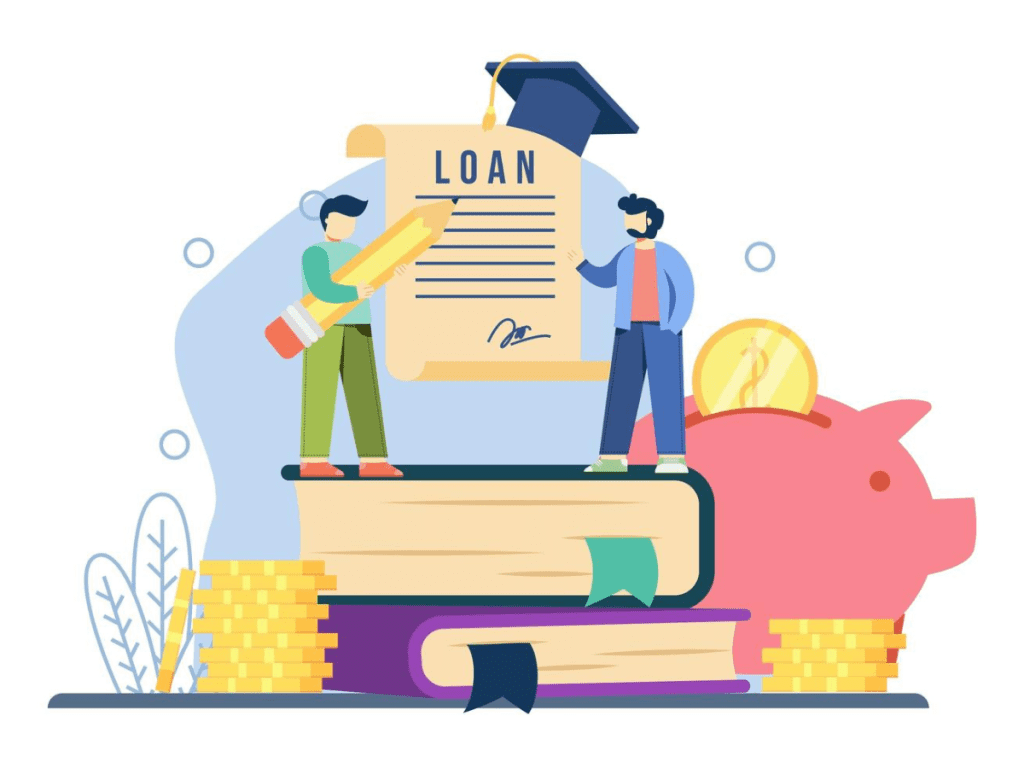introduction
Student loan refinancing is a financial strategy that can help borrowers save money, simplify their loan payments, or reduce their interest rates. However, refinancing isn’t the right choice for everyone, and it’s important to understand the pros and cons before deciding if it’s the right move for you. In this article, we’ll explore the key factors to consider before refinancing your student loans, including how refinancing works, its potential benefits, and the risks involved.
What is Student Loan Refinancing?
Student loan refinancing is the process of taking out a new loan to pay off one or more of your existing student loans, often with a lower interest rate. You may refinance both federal and private student loans, and the new loan typically offers more favorable terms—such as a lower interest rate or more flexible repayment options.
Refinancing your loans means you will no longer have the original loans; they are replaced with a new loan issued by a private lender. The new loan will have a new interest rate, which can either be fixed (stays the same over time) or variable (changes periodically based on market conditions).
Who Should Consider Refinancing?
Refinancing can be a good option for certain borrowers, but it’s not for everyone. Here are some factors to consider when deciding if refinancing is the right choice for you:
1. Strong Credit and Stable Income
Refinancing is most beneficial for borrowers who have good credit and a stable income. Lenders use your credit score and financial situation to determine your eligibility and the interest rate you’ll receive. If you have a high credit score (typically 700 or above), you may qualify for lower interest rates, which could lead to significant savings over the life of your loan.
Additionally, having a steady income or employment helps demonstrate your ability to repay the loan, which lenders look for when considering refinancing applications.
2. Private Loans or High Interest Rates
If you have private student loans with high interest rates, refinancing can be an effective way to secure a lower rate. Private loans often have higher interest rates than federal loans, and refinancing can help you reduce those rates, saving you money in the long run.
Similarly, if you have federal student loans with high interest rates and you’re in a good financial position, refinancing could be a viable option. However, before refinancing federal loans, be sure to carefully weigh the potential trade-offs, as you will lose access to certain borrower protections (such as income-driven repayment plans and loan forgiveness programs).
3. Desire for a Lower Monthly Payment
Refinancing can also help you lower your monthly payment. If you extend the loan term (e.g., from 10 years to 20 years), you may reduce your monthly payment amount. This can provide immediate relief if you’re struggling to make your current payments. However, keep in mind that extending the term of your loan could increase the total amount of interest you pay over time, even if your monthly payment is lower.
Benefits of Refinancing Your Student Loans
If refinancing is the right choice for you, here are the potential benefits you may experience:
1. Lower Interest Rates
The primary reason many borrowers refinance is to secure a lower interest rate. By refinancing with a private lender, you may qualify for an interest rate that’s lower than your current rate, especially if your credit score has improved since you took out your original loans. A lower interest rate means you’ll pay less in interest over the life of the loan, helping you save money.
2. Simplified Loan Management
If you have multiple student loans, refinancing can consolidate them into one loan with a single monthly payment. This can simplify loan management and make it easier to track your payments. Instead of juggling several loans with different interest rates, due dates, and servicers, you’ll have one loan with a fixed payment.
3. Fixed or Variable Rate Options
When you refinance, you can choose between a fixed-rate loan (where the interest rate remains the same over time) or a variable-rate loan (where the interest rate fluctuates with market conditions). If you think interest rates will remain low or decrease in the future, a variable-rate loan could save you money. On the other hand, if you prefer predictability, a fixed-rate loan provides stable, consistent payments.
4. Lower Monthly Payments (if you extend the loan term)
As mentioned earlier, refinancing can potentially lower your monthly payment by extending the loan term. This can provide immediate financial relief if you’re struggling to meet your monthly obligations. However, keep in mind that while your monthly payments may be lower, you may end up paying more interest in the long run, as the loan term is extended.
Drawbacks and Risks of Refinancing Your Student Loans
While refinancing can be a beneficial strategy, it’s important to be aware of the potential drawbacks and risks:
1. Loss of Federal Loan Protections
One of the biggest downsides of refinancing federal student loans is that you will lose access to federal protections, including:
- Income-Driven Repayment (IDR) Plans: Federal loans offer income-driven repayment plans that adjust your monthly payments based on your income and family size. If you refinance federal loans, you will no longer be eligible for these programs.
- Loan Forgiveness Programs: Federal student loans are eligible for Public Service Loan Forgiveness (PSLF), which can forgive the remaining balance of your loans after 120 qualifying payments if you work in public service. Refinancing to a private loan makes you ineligible for forgiveness programs like PSLF.
- Deferment and Forbearance Options: Federal loans offer more flexible deferment and forbearance options, allowing you to temporarily postpone or reduce your payments during financial hardship. Private loans may not provide these options or may limit them.
2. Private Loan Risks
Private lenders typically do not offer the same borrower protections as federal loans, such as access to flexible repayment plans or forgiveness programs. Additionally, private loans often come with variable interest rates, which can increase your payments if interest rates rise. Be sure to carefully review the terms of the loan to understand the risks involved, especially if you choose a variable rate.
3. Not Ideal for Borrowers with Poor Credit
Refinancing is most beneficial for borrowers with good to excellent credit. If you have poor credit or limited credit history, you may not qualify for a lower interest rate, or you may be offered terms that aren’t financially beneficial. If refinancing with a high interest rate is the only option, it might not be worth refinancing your loans.
4. Higher Total Loan Cost (if you extend the term)
Although refinancing can lower your monthly payment, extending the loan term (such as from 10 years to 20 years) can increase the total amount of interest you’ll pay over the life of the loan. While your monthly payment will be lower, you may end up paying more in total if you extend the repayment period. It’s essential to calculate the total cost of the loan before deciding to extend the term.
How to Refinance Your Student Loans
If you decide refinancing is the right option for you, here’s how to go about it:
- Evaluate Your Financial Situation: Determine if refinancing will save you money in the long run. Consider your credit score, income, and existing loan terms.
- Shop Around for Lenders: Compare offers from multiple private lenders to find the best refinancing options. Look at interest rates, loan terms, and fees.
- Check for Eligibility: Lenders will assess your credit score, income, and debt-to-income ratio when deciding whether to approve your application. Be sure you meet the eligibility criteria for refinancing.
- Submit Your Application: Once you’ve chosen a lender, submit an application. You’ll need to provide personal and financial information, including your student loan details.
- Review Terms Carefully: Before accepting a refinancing offer, review all the terms, including the interest rate, loan term, repayment options, and any fees involved.
Conclusion: Is Refinancing Right for You?
Refinancing can be an excellent way to save money on your student loans or simplify your payments. If you have strong credit, stable income, and a solid repayment strategy, refinancing may help you secure a lower interest rate or better loan terms. However, you should carefully consider the potential drawbacks, such as losing federal loan protections and the possibility of paying more over the life of the loan if you extend the term.
Before refinancing, weigh the pros and cons, and consider your long-term financial goals. If you’re unsure whether refinancing is right for you, it may be helpful to consult with a financial advisor to explore your options.

